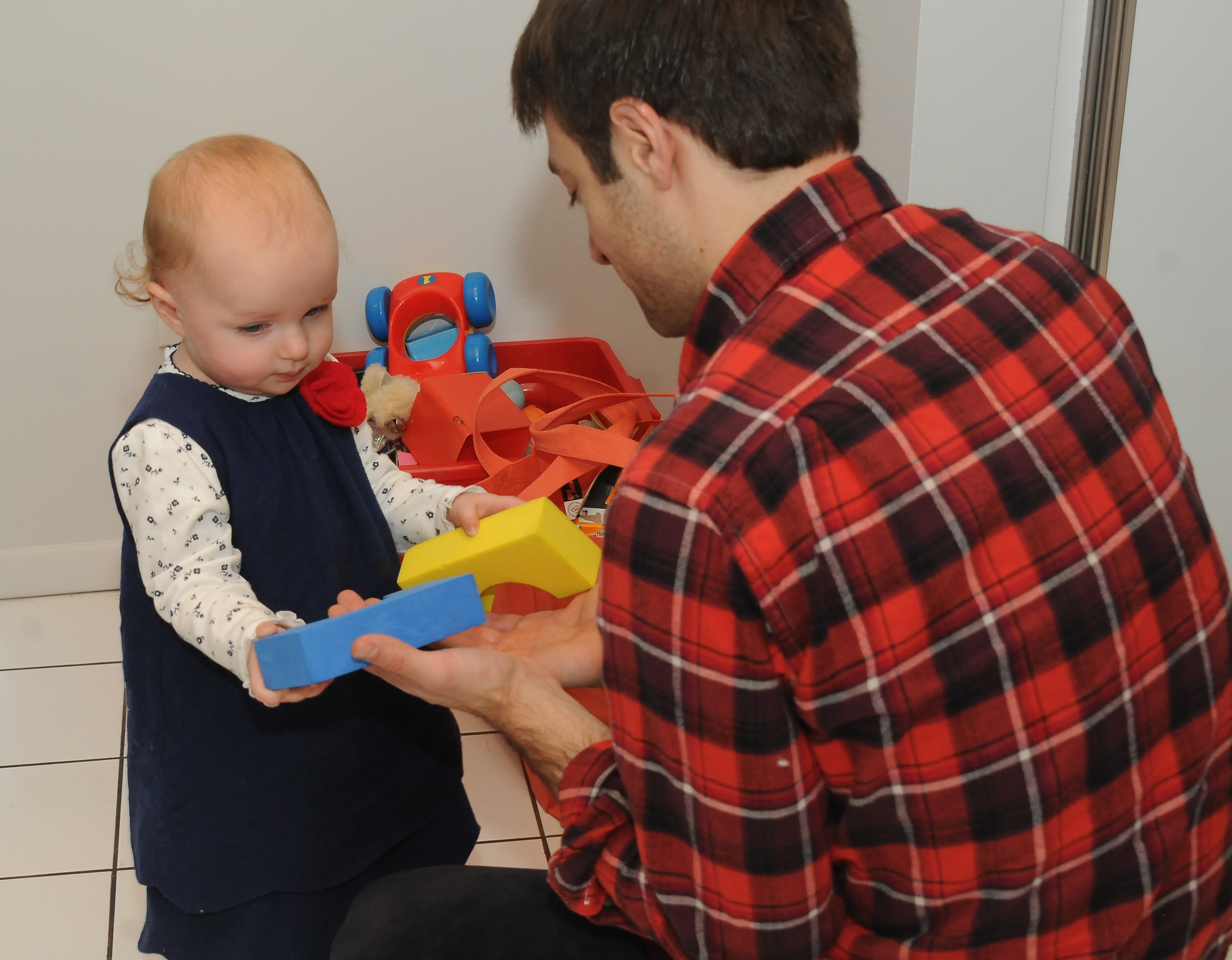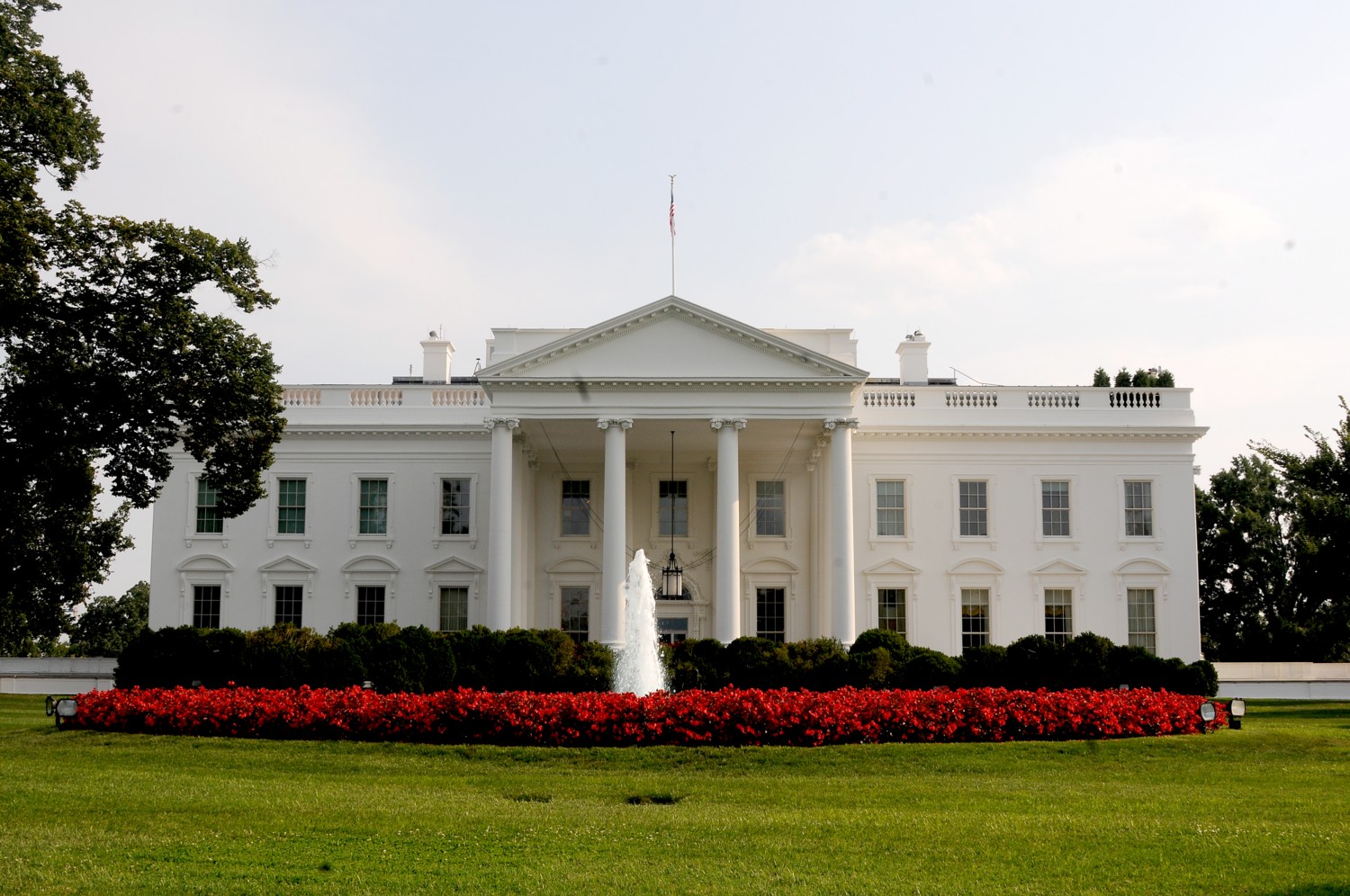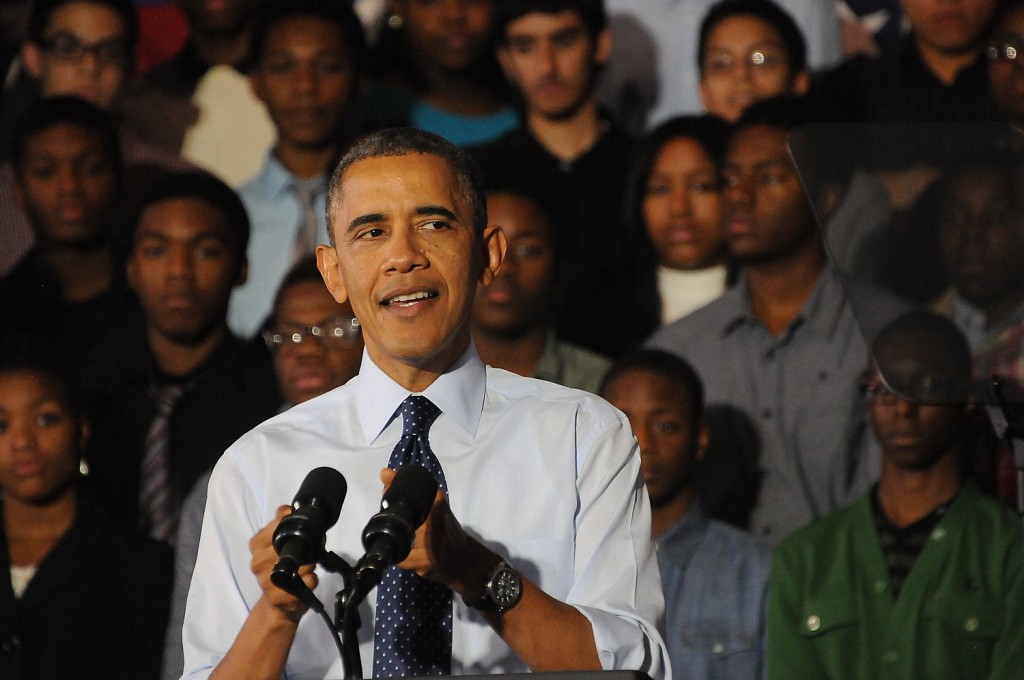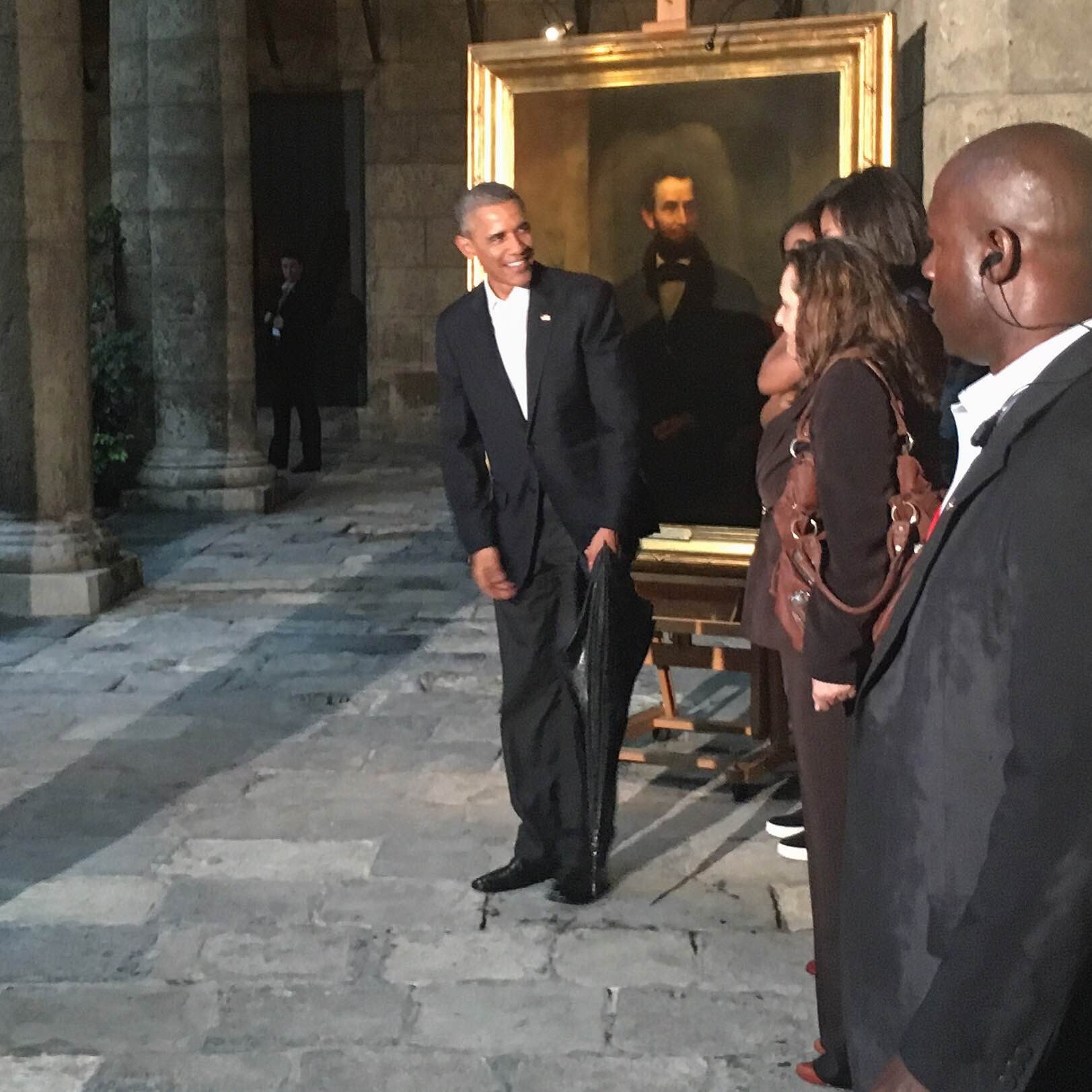by Karen Rubin, News & Photo Features
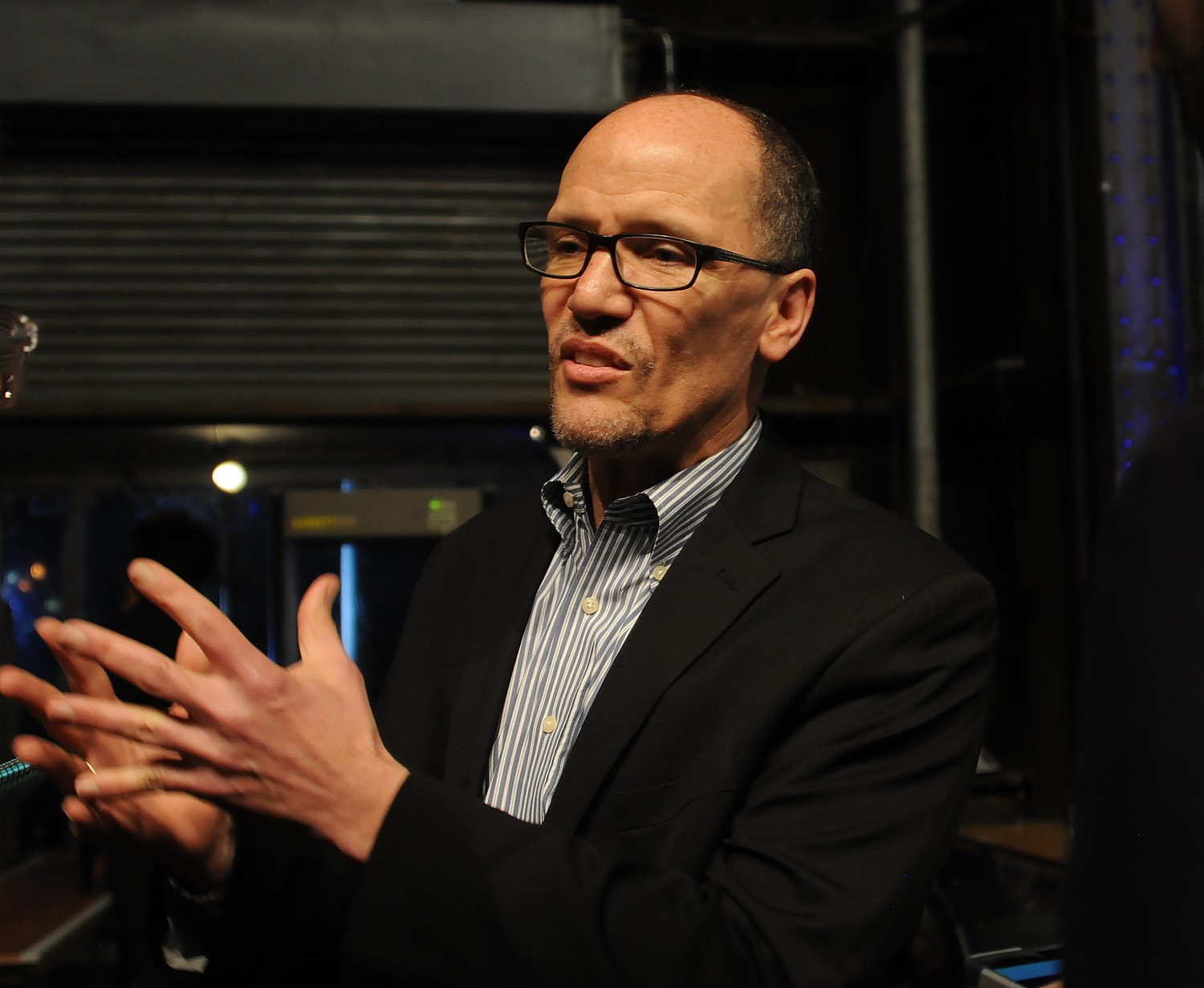
With the media obsessively focused on the presidential contest, Republicans with a stake in convincing Americans how bad off they are and promising to “bring back jobs”, and the Republican-controlled Congress determined to block any positive initiative President Obama might offer – including blocking the creation of an Infrastructure Bank and the American Jobs Act, and increasing the federal minimum wage, though the President did act to raise the wage to $10.10 for federal jobs and contractors, and passing comprehensive Immigration Reform – most Americans are unaware of what the President has done using his executive powers to create job opportunities. For the past few years, he has worked to ease the pathway between schools and employers, ease access and affordability to college, relieve student debt, and expand job training and apprenticeships.
When President Obama came into office in January, 2009, the United States had plunged into the deepest recession since the Great Recession, shedding over 800,000 jobs a month.
Since the beginning of his Administration, President Obama has focused on creating an economy that works for every American. Under President Obama, our economy has added 14.4 million jobs over 73 straight months, the longest streak of job creation on record.
“That’s more new jobs than all the other industrial nations combined,” Labor Secretary Thomas E. Perez said. Unemployment, which went as high as 10%, is down to 5%, “but the President is not satisfied. Our primary function to restore and maintain the middle class, and the way do that is access to good paying jobs, where can benefit from productivity.”
But the jobs available today, and the jobs of the future, are higher-skill jobs that require more education and advanced skills.
“An apprenticeship has to be one of the most sturdy, fortified on-ramps to the middle class,” Labor Secretary Perez said in a press call announcing $90 million in new funding for ApprenticeshipUSA. “Apprenticeship is the ‘other’ college, but without the debt.”
Job-driven apprenticeships are among the surest pathways to provide American workers from all backgrounds with the skills and knowledge they need to acquire good-paying jobs and grow the economy. In fact, 87 percent of apprentices are employed after completing their programs, with an average starting wage above $50,000. The return on investment for employers is also impressive — international studies suggest that for every dollar spent on apprenticeship, employers may get an average of $1.47 back in increased productivity, reduced waste and greater front-line innovation. As a result, the President has made expanding apprenticeship a priority for his Administration.
Since the President’s 2014 State of the Union call to action, the U.S. has added more than 75,000 new apprenticeships, the largest increase in nearly a decade. And last year, the President signed into law the first-ever annual funding for apprenticeship in the Fiscal Year 2016 spending bill, following a bipartisan agreement based on the President’s budget request.
The Department of Labor just announced the Administration’s latest step to increase access to apprenticeship – using the $90 million provided in that spending bill for new investments through ApprenticeshipUSA to expand apprenticeship in the United States, including:
- $60 million to support state strategies to expand apprenticeship, including funding for regional industry partnerships and innovative strategies that diversify apprenticeship locally;
- $30 million to catalyze industry partnerships in fast-growing and high-tech industries, to support organizations focused on increasing diversity, and to launch national efforts to make it easier for employers to start and for workers to find apprenticeship opportunities.
Building on the bipartisan support for apprenticeship, the Department of Labor intends to make multi-year grants and contract awards to winning states, non-profits, workforce intermediaries, and industry associations subject to the availability of funding through the appropriations process using the $90 million provided through bipartisan support in the FY2016 spending bill for the first year of the awards.
Investing $60 Million to Support Smart State Strategies to Expand Apprenticeship
Today, the Department of Labor is announcing a first step in investing in state apprenticeship strategies. Recognizing Governors’ unique ability to create smart statewide strategies to expand apprenticeship, the Department is making up to $9.5 million available for ApprenticeshipUSA State Accelerator Grants, for states to develop strategic plans and build partnerships for apprenticeship expansion and diversification. States will also receive support to develop comprehensive game plans for encouraging businesses to launch apprenticeship programs in a variety of industries including advanced manufacturing, health care, IT, construction, and transportation.
These state accelerator grants will be followed this spring by a $50 million ApprenticeshipUSA State Expansion Grants Competition to scale-up state efforts to expand apprenticeship. The expansion grants will help states integrate apprenticeship into their education and workforce systems; engage industry and other partners at scale to expand apprenticeship to new sectors and new populations; support state capacity to conduct outreach and work with employers to start new programs; provide support to promote greater inclusion and diversity in apprenticeship; and implement state innovations, incentives and system reforms. By investing in state strategies for growing apprenticeship opportunities, these funds will help strengthen the foundation for the rapid and sustained expansion of quality apprenticeship nationwide.
The ApprenticeshipUSA state investments build on the demonstrated success several states have already shown in expanding apprenticeship. With the leadership of Governors across the country, 14 states have increased the number of apprentices in their state by over 20 percent – including:
- Iowa, which tripled state funds to support apprenticeship across key industries
- California, which unlocked additional funds to cover training costs,
- Georgia, which brought together its workforce development and community college systems to partner with over thirty major employers on apprenticeship,
- Connecticut, which launched a Manufacturing Innovation Fund to support employers engaged in apprenticeship expansion.
Providing $30 Million for Industry Partnerships, Innovations to Enhance Diversity, andAccess to Apprenticeship
Through ApprenticeshipUSA, the Department of Labor will also make investments to help more employers start or grow apprenticeship programs, particularly in high-growth and high-tech industries like health care, IT and advanced manufacturing where apprenticeship has not been as broadly adopted. Through industry-driven partnerships, these investments will focus on leveraging collaborations with workforce development organizations, industry associations, labor groups, and training providers to help multiple employers at a time accelerate the expansion of apprenticeship nationwide.
Industry and training intermediaries can provide support for individual employers and entire industries as they seek to start or expand apprenticeship. For example, through one such partnership, the American Health Information Management Association (AHIMA) and healthcare employers ranging from Pfizer to the Seattle Children’s Hospital joined forces to create an industry-recognized apprenticeship preparing workers for careers in healthcare services and hospital IT, leveraging common industry-approved curriculum and training solutions. The Department of Labor’s investments will help spur similar collaborations across growing, high-skills industries.
Expanding Registered Apprenticeship also means opening up opportunities to traditionally underrepresented populations including women, minorities, and people with disabilities, tapping into the full range of America’s talent. While all of theApprenticeshipUSA investments include a focus on making apprenticeships more inclusive, the Department of Labor, through ApprenticeshipUSA, will invest in strategies specifically focused on building pathways to apprenticeship, expanding recruiting and other strategies for attracting diverse participants, and in national innovations that promote greater access to apprenticeships for traditionally underrepresented groups.
These national investments will complement investments made at the state level, ensuring that state strategies embrace diversity in apprenticeship. They will also support national efforts to engage community-based organizations, workforce intermediaries and other non-profits in the development and implementation of pathways to apprenticeship including pre-apprenticeship, supportive services, and youth apprenticeships. In addition, the Department of Labor will invest in national activities to increase access to apprenticeship including strategic marketing and outreach, technology improvements and innovations that make it easier for employers to start apprenticeships and for job-seekers to connect with apprenticeship opportunities.
For more information on the timeline of additional investments and deadlines for proposals, please visit http://www.dol.gov/apprenticeship
Building on Success in Expanding Apprenticeship and Increase Access to Jobs-Driven Training
Today’s announcement builds on the Obama Administration’s previous efforts to increase access to apprenticeship and jobs-driven training to prepare workers for high-skill jobs available today, including:
- Investing an unprecedented $175 million in American Apprenticeship Grants.
In September 2015, the Department of Labor announced $175 million in grants to 46 public-private partnerships between employers, organized labor, non-profits, local governments, and educational institutions that are expanding high-quality apprenticeships. The grantees are well on their way to creating and filling more than 34,000 new apprentices in high-growth and high-tech industries including health care, IT and advanced manufacturing over the next five years. - Highlighting the value of apprenticeships through LEADERS. More than 170 employers, colleges, and labor organizations have signed on to be ApprenticeshipUSA LEADERS (Leaders of Excellence in Apprenticeship Development, Education and Research) by starting or expanding their own work-based learning programs and encouraging their peers to follow. Together, employers in the LEADERS program have pledged to create nearly 20,000 new apprenticeship positions.
- Expanding opportunities for apprentices to earn college credit towards a degree.
More than 200 colleges nationwide have joined the Registered Apprenticeship-College Consortium, which allows graduates of Registered Apprenticeship programs to turn their on-the-job and classroom training into college credits toward an associate or bachelor degree. - Directing training investments into job-driven strategies. Following the Vice President’s Job-Driven Training review, federal agencies have taken actions to make programs serving over 21 million Americans every year more effective and accountable for preparing Americans for good jobs that employers need to fill. These actions include ensuring training investments include essential elements that matter most for getting Americans into better jobs— such as strong employer engagement, work-based learning approaches like apprenticeship, better use of labor market information, and accountability for employment outcomes. More details on the Administration’s progress on Job-Driven Training can be found here.
See also:
White House Announces New Actions to Help More Americans Manage Student Debt




